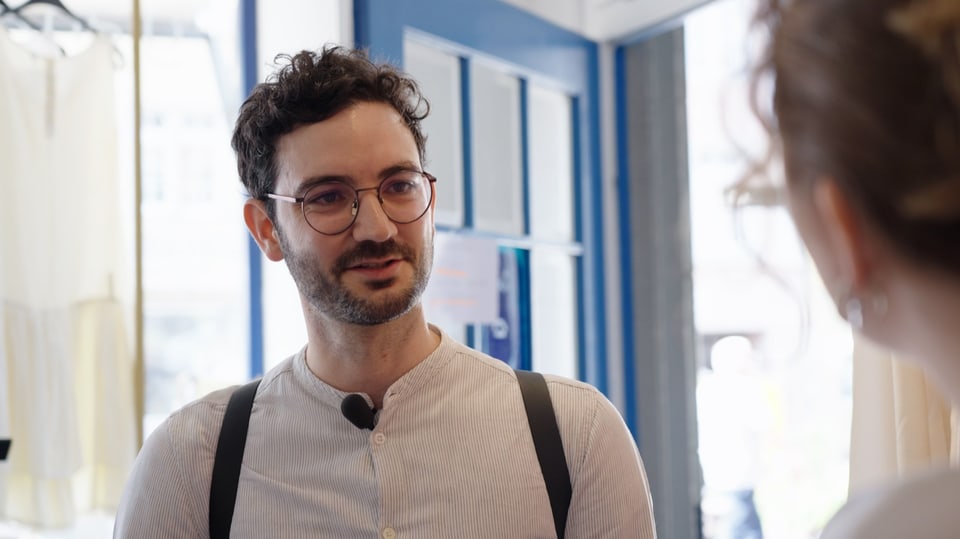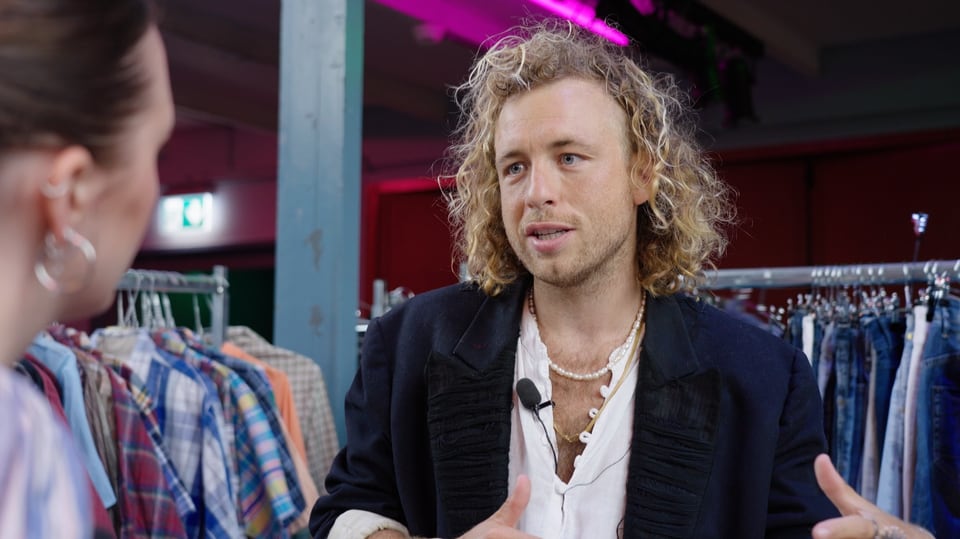Contents
Second-hand fashion is trendy and clothes from all over the world are also sold. But how sustainable is it?
When Vinokilo makes a guest appearance in Zurich, the organizers register up to 3,000 visitors over a weekend. The German company has been making buying second-hand an event throughout Europe for a number of years: DJs, tattoo artists and a bar are used to lure mainly young buyers into trendy factory halls.
We have to overcome many barriers to compete with modern fashion.
You can buy used clothes from all over the world and you pay per kilo. And by all appearances, there are enough goods, because according to manager Robin Balser, Vinokilo arrived this Saturday with two and a half tons of clothing.
Legend:
Robin Balser, Managing Director of Vinokilo, sees second-hand clothing on the rise.
SRF
This presentation with trendy music in urban locations is important, says manager Balser. Even if he often emphasizes that second-hand has shed its dusty image, he says: “We have to overcome many barriers in order to be able to compete with modern fashion.”
According to Balser, the clothes that are supposed to find a new owner here come mainly from France and Spain and around one percent comes from the USA or Japan. Personnel trained by the company look for exactly those parts in distribution centers, where the yield ends up as used clothing collections, which they believe can be sold. That’s only up to four percent of the existing clothes, says Balser.

Legend:
Adrian Masshardt, Managing Director of Fizzen, explains how the second-hand clothes get into the shops.
SRF
The Swiss company Fizzen does this in a similar way. They sell new goods and second-hand fashion under one roof. They obtain their second-hand clothing from a distribution center in Holland, which in turn collects clothing from all over the world. Sorted out, washed and patched in a hall in Bern.
It can sometimes be a long way before the item of clothing that has been worn hangs in a Swiss shop or at the Swiss Vinokilo event in Zurich.
Second-hand as a counter-movement to fast fashion?
Gianluca Scheidegger also confirms that second-hand clothing is becoming more and more popular. However, the trend and consumer researcher questions whether this is due to a general sustainability trend. Because the market for fast fashion products has also increased.
In addition, large fashion chains such as H&M or mail order companies such as Zalando have also entered the second-hand business in recent years. Especially when these companies only offer customers vouchers for their own platform as proceeds for the old clothes, Scheidegger is critical, because customers would be encouraged to buy more: “Evaluations show that customers also buy new products for their second-hand clothing on the Buy platform.»

Legend:
Consumer researcher Gianluca Scheidegger explains how the market has changed in recent years.
SRF
Anyone who wants to consume second-hand fashion as sustainably as possible should above all think locally: “Small shops in which private individuals hand in their clothes and these are resold directly on site keep the clothing cycle as small as possible,” says consumer researcher Gianluca Scheidegger. In this way, the item of clothing finds a new owner and long transport routes are saved.

